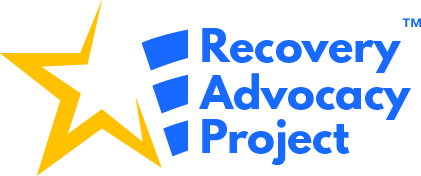Building your advocacy base
Defining an Advocacy Base
An advocacy base is a local core group of dedicated supporters of the community organizing work you do. This can include aspects of in person, technical, or moral support in your efforts. Your advocacy base should be a group of people you can rely on when there are local actions or you need help organizing your local advocacy projects.
- This HOW TO can apply to both local community and state recovery organizations.
- This HOW TO will have two key parts to help in your organizing.
Building Your Base
Why it is important to build your Advocacy Base.
- Part of being a successful community organizer depends on your ability to identify, motivate, and encourage a core base of advocates to help you in your efforts.
- There is strength in numbers.
- Allows you to understand that you are not alone in your organizing efforts.
- Building a core base helps you to avoid frustration and fatigue as a community organizer.
- Your advocacy base will open up additional doors for organizing opportunities, increase visibility on the issues you all support, build relationships with local decision makers, and form new community and organizational partnerships.
Recovery advocates and organizations from all over the country have benefited from advocate and volunteer outreach. Here is a step by step guide and some best practices to work towards building and sustaining your own advocacy base.
Step by Step Guide to Building your Advocacy Base
1. Understand that building your Advocacy Base begins with you.
Many of you might be asking, “Where do I even start when I build my advocacy base?” Our answer at the Recovery Advocacy Project is “This starts with you.” Understanding what you bring to the table as a leader, community organizer, or advocate is significant to understanding your vision in building an advocacy base.
Take some time to assess your own strengths, passions, leadership and organizing skills. You are an important part of your own advocacy base. Here is a Leadership Assessment you can use for help with this practice. Download Leadership Assessment
After your assessment, take a look at what you can focus on to improve your organizing skills. Ask yourself what your next level of leadership looks like. If you have people in your network you can learn from, be sure to ask for assistance.
2. Create a core list of potential individuals within your network that you think would join you in your advocacy efforts.
This list may range from 5, to 10, to 50+ people. No matter how many individuals end up on your initial list, these individuals came to mind for good reason. Trust your instinct when drafting your list.
The list may include:
- People in Recovery
- Supporters of Recovery
- Family groups
- Prevention and treatment providers
- Criminal Justice Advocates
Use your Recovery Asset and Resource Map to improve your outreach list. Find the HOW TO: Create a Recovery Asset and Resource Map HERE
Think outside the box while creating your list. There may be people you can contact that would be willing to take part in your advocacy efforts. Some additional individuals may include advocates for mental health, faith leaders, known community leaders.
Scan your Facebook list of friends, email contacts, phone contacts, and other social media accounts to identify some potential advocates in your area.
Consult the list you created in the HOW TO: Host a Recovery Community Advocacy Meeting to see if there are any additions to be made.
3. Use a recruitment tool to make collecting contacts of your potential advocacy base easier.
The Recovery Advocacy Team Project has some tools already available to you to build your advocacy base.
One tool many advocates are using is the Recovery Advocacy Team Project Advocate Card. When grassroots advocates complete this RAP Card they will be added to communications from the Recovery Advocacy Project Leadership, and invited to join their regional RAP Facebook pages found HERE.

Encouraging potential advocates to sign up to advocate on the RAP website also automatically organizes them on the state level through the action network for you. You can direct state advocates to your state Recovery Advocacy Project pages.
You may choose to create and use your own recruitment tool similar to the RAP Advocate Card to reflect your community or state.
Assemble advocacy start up packs, and always keep them with you, to hand to your potential base. This pack can include your business card, the RAP Advocate Card, a flyer for your upcoming events or meetings, or information about social media sites linked to your advocacy efforts.
4. Have consistent community meetings for your advocates to attend.
Learn more about how to host a Recovery Advocacy Project Meeting HERE. Having ongoing-local meetings for interested advocates to attend can be the center of both building and sustaining your base. These community meetings with your neighbors can keep advocates engaged, focused, and working together towards common goals.
Encourage your core team of advocates to share about the next upcoming meetings that are scheduled. The Recovery Community is a word of mouth community, so the enthusiasm generated from your team meetings will spread the word
5. Create a simple Facebook Group page for your Advocacy Base to join.
Be specific in describing your community Facebook Group.
Example:
The Hamilton Township Advocates for Addiction Recovery meets periodically to provide community based solutions around an addiction crisis affecting many families and our neighbors in Hamilton. We are made up of dedicated people in recovery, family members, and supporters of recovery. Join this Facebook Page for updates on upcoming community meetings, campaigns, projects, and events.
Make consistent updates to your Facebook Page including local news articles, victories (large and small), inspirational quotes about recovery, local partnerships, local blog articles, community calls to action, and reminders for upcoming local advocacy meetings or events.
Keep all posts page related.
Ask to link your Facebook page and Recovery Advocacy Recruitment tools to existing organizations in your area. Make a quick scan of organizations that would support your advocacy efforts and inquire about partnership.
As the group identifies mission/vision and goals, be sure to update the page and any materials.
Feel free to link any of these toolkit pieces to your Facebook Group page to help guide your advocacy base during community projects.
Take the time to write your own blog posts and share with the Facebook Group. Many advocates have used the platform Medium to share writing for local and national issues. www.medium.com
You can find a helpful guide for writing content on Medium here.
Sustaining Your Base
1. Have consistent recovery advocacy community meetings for your advocates to attend.
Learn more about how to host a Recovery Advocacy Project Meeting HERE. Having ongoing-local meetings for interested advocates to attend can be the center of both building and sustaining your base. These community meetings with your neighbors can keep advocates engaged, focused, and working together towards common goals.
Hosting regular meeting builds momentum and a team mentality that will be easier to keep individuals engaged. It also creates a platform for newly interested advocates to participate. The Recovery Advocacy Project recommends you host a meeting on a monthly basis. Many more best practices for this can be found in the HOW TO: Host a Recovery Advocacy Meeting piece of the toolkit on the RAP website.
2. Create campaigns for your community members to engage in.
Organizing your efforts into an official campaign gives your advocacy base something you are known for, inspires others to take part, and keeps your advocates engaged.
Neighborhood or community campaigns can catch the attention of your neighbors. For example, if you are working to start a campaign to expand on the availability of Narcan (Naloxone) in public buildings you can use the campaign as a way to educate community members on the “what, the “why”, and the “how of your campaign.
EXAMPLE:
“What” To require all town public building to stock Narcan.
“Why” Narcan saves lives and can lead individuals struggling with addiction towards recovery. “How” Petition the town hall and Mayor’s office by collecting 200+ signatures of town residents.
Come up with a name for your campaign that tells of its purpose and potentially grabs the attention of the public and local decision makers.
EXAMPLE: The “Hamilton Township Save a Life Campaign”
3. Email an electronic newsletter for your advocates.
Communication is key. In addition to communicating with your advocates through social media, collecting emails with the RAP Advocate Cards, or a Card you create for your local area allows you to report on progress of your local advocacy efforts, link local articles related to addiction and recovery, and remind individuals of upcoming advocacy meetings and community events.
Communications like an electronic newsletter should only be done periodically. Receiving an email once a month, every other month, or every three months will not be too much for your advocates.
Create a simple logo and name for your electronic newsletter. (Ex: The Hamilton Township E-News) There are free sites and apps like Canva you can use to create your logo.
Number your electronic newsletter (Ex. Edition 1, Edition 2, etc.) This can show people that join your email newsletter that this is ongoing and is organized. It may also be a good practice to ask new members if they want to receive the last couple of newsletters so they can get a better idea of the work you and your advocates accomplish locally.
Many people do not want their email address shared with others. When sending your Advocacy e-mails always use the BCC (Blind Carbon Copy) line when sending out emails. You can also set up free mass email accounts using sites like Mailchimp to avoid this.
4. Use tools provided in The Action Network.
There are online tools you can use to help you guide, build, and sustain your advocacy base both locally and on the state level. Your state Action Networks will be created for you and we will link them here on the Recovery Advocacy Project website soon.
5. Make a list of upcoming community events.
Many communities, municipalities, and counties have online calendars. Spend some time researching upcoming events and conferences online that may be appropriate for you or your advocates to attend and talk to participants about your advocacy efforts. Inquire about potential speaking programs you can take part in, panel discussions, or resource tables you can set up at. You may find Health Fairs, Community Days, holiday celebrations, or local festivals.
Build relationships with the individuals who assemble these local calendars. You can promote your upcoming advocacy meetings and community events on these pages. Some just require an online submission.
Local libraries and town community centers also tend to be a center for hosting or promoting community events. Contact them to see how you can stay updated.
6. Assemble advocacy start up packs, and always keep them with you, to hand to your potential base.
This applies to both building and sustaining your advocacy base. This advocacy start up pack can include your business card, the RAP Advocate Card, a flyer for your upcoming events or meetings, or information about social media sites linked to your advocacy efforts.
Keep a few packets with you in your vehicle.
Ask local recovery supportive businesses, Alano Clubs, and Recovery Community Centers to display some as well. Use the advocacy start up packs as a good conversation starter with local organizations.
Enroll your core advocates in keeping advocacy packets with them to build and sustain your advocacy base.

